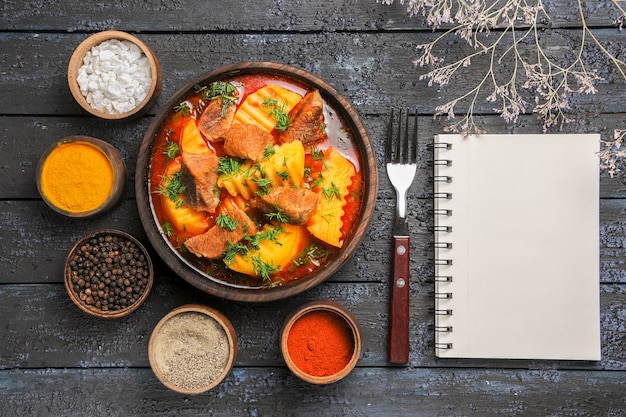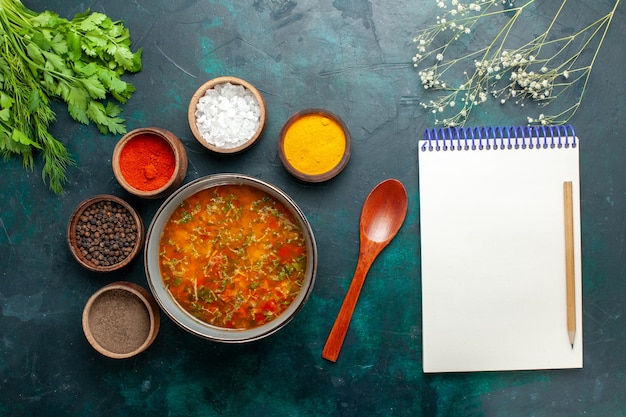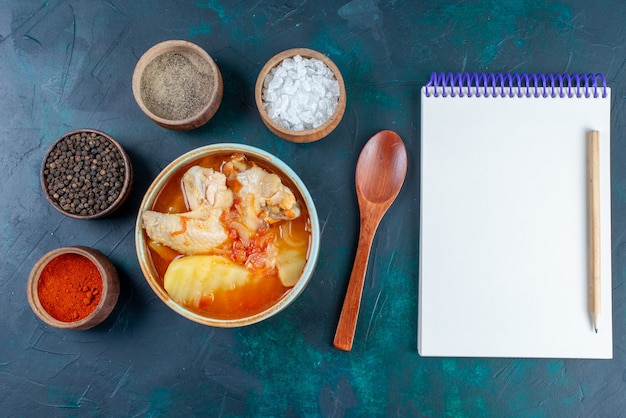(Part 1) The Spice Rack: Building the Flavour Foundation

A good curry starts with a good spice blend. It’s the foundation of flavour, and there’s no shortcut here. It’s worth investing in a few key spices to truly elevate your curry game. I’m not talking about those pre-packaged curry powders you find in the supermarket. We’re going for real, authentic flavour here, folks. Let’s gather our ingredients and get ready to create a symphony of taste.
Spice Blends: A Culinary Symphony
Let’s start with the basics. You'll need ground cumin, turmeric, coriander, and chilli powder. These are the essential building blocks of a good curry, adding earthy, warm, and a hint of fiery heat. But the real magic happens when you combine these spices – it’s like a culinary orchestra, and the curry is the masterpiece.
Think of it like this: the spices are the musicians, and the curry is the symphony. You've got your soloists, like the smoky depth of cumin, and the vibrant, earthy notes of coriander. Then there are the supporting cast, like turmeric, adding its distinctive golden colour and warm flavour, and the fiery, tangy chilli powder. Together, they create a harmonious melody that will leave your taste buds tingling.
Essential Spices:
- Ground cumin: This is the backbone of the curry, providing a rich, earthy, and slightly nutty flavour. It's a powerhouse of flavour, bringing depth and complexity to the dish.
- Turmeric: The vibrant yellow hue of turmeric adds a warm, earthy flavour, as well as potent anti-inflammatory properties. It's a real nutritional powerhouse, giving your curry a health boost.
- Coriander: Coriander adds a fresh, citrusy note, and its earthy aroma beautifully complements the other spices. It's a versatile spice that adds a touch of brightness and freshness to the curry.
- Chilli powder: This is where you can tailor the heat to your liking. A touch of chilli powder brings a nice warmth, but if you love a kick, add more to your heart's content.
- Garam masala: This is a complex blend of spices, typically including cinnamon, cardamom, cloves, and black pepper. It adds a depth of flavour and aroma to the curry, and it’s best added towards the end of cooking to preserve its delicate flavours.
(Part 2) The Chicken: The Star of the Show

Now, on to the star of the show – the chicken. I prefer to use chicken thighs for this recipe. They're juicier and more forgiving than chicken breasts, and they hold their shape better during the cooking process. Plus, they absorb all that delicious flavour beautifully. Think of them as the leading actors in our curry drama.
Prepping the Chicken:
- Cut the chicken into bite-sized pieces. This helps them cook evenly and ensures every bit is coated in the aromatic sauce. Think of it as giving the chicken its own spotlight moment in the curry.
- Season the chicken liberally with salt and pepper. This is the foundation of flavour, so don’t skimp on it. I like to use sea salt for its subtle mineral notes, but any good quality salt will do. A good seasoning is like giving the chicken a strong opening line in the curry play.
(Part 3) The Onion and Garlic: The Base of the Symphony

Now, we’re going to start building the base of our curry. Onions and garlic are the unsung heroes of Indian cuisine. They create a foundation of sweetness and umami that the spices will then dance on. Think of them as the supporting actors, the ones that create the perfect backdrop for the rest of the flavours to shine.
Building the Base:
- Finely chop a large onion. This is a crucial step. Don’t be tempted to use pre-sliced onions, as they tend to be too watery. We want a nice, soft base, not a watery mess. The onions are the set designer, creating a beautiful stage for the curry's flavour to unfold.
- Crush a few cloves of garlic. Again, fresh is best, but if you're short on time, a jar of pre-minced garlic will do the trick. Just try to avoid the garlic granules – they tend to be too strong and can overwhelm the other flavours. Garlic is the lighting designer, adding a subtle warmth and depth to the scene.
- Heat some oil in a large saucepan or pot. I like to use a good quality olive oil for its delicate flavour, but vegetable oil will work perfectly well. The key is to use enough oil so that the onions and garlic cook evenly without burning. Oil is the stage manager, ensuring the actors – the spices, onions, and garlic – are ready for their performance.
- Sauté the onions until they turn a beautiful golden brown. This is where patience comes in. Don’t rush the process. We want the onions to caramelise, developing a sweet, rich flavour that’s essential for a good curry. This process is the opening scene, allowing the onions to transform into the perfect base for the curry.
- Add the garlic and sauté for another minute or two, until fragrant. Be careful not to burn the garlic. Garlic, like a seasoned performer, adds a touch of intensity and depth to the play.
(Part 4) The Spice Infusion: Bringing the Symphony to Life
Now, it’s time to add the spices and let the magic begin. This is the stage where the curry really comes alive, and the aroma will fill your kitchen with the intoxicating scent of India. It’s like the orchestra starts playing, and the music fills the air.
Spice Infusion:
- Add the cumin, turmeric, coriander, and chilli powder to the pan. Stir them into the onions and garlic, coating them in the golden-brown mixture. This is the point where the individual instruments start to play, blending together to create a complex and harmonious sound.
- Cook for a minute or two, stirring constantly. This is important to release the full flavour of the spices. You’ll notice the spices becoming fragrant and the mixture will start to smell divine. It’s like the musicians tuning their instruments, getting ready for the main act.
- Add the garam masala. This goes in towards the end of the cooking process, as it’s a delicate spice blend that can easily become bitter if cooked for too long. Stir it in gently and let the aromas fill the kitchen. Garam masala is the conductor, adding a final touch of complexity and depth to the symphony.
(Part 5) The Tomato Base: Adding Depth and Texture
Tomatoes are the secret weapon of a good curry. They add a sweetness, acidity, and depth of flavour that you won’t find anywhere else. It’s like a secret ingredient that brings the whole dish together.
Tomato Base:
- Add a can of chopped tomatoes to the pan. I like to use plum tomatoes for their rich flavour and firm texture. You can also use diced tomatoes, but the chopped tomatoes will give the curry a more rustic feel. The tomatoes are the choreographer, guiding the dance of flavours and textures.
- Simmer for 5-10 minutes, until the tomatoes have softened and broken down. This helps to thicken the sauce and create a base for the chicken. The tomatoes are like the stage crew, setting the scene for the grand finale.
(Part 6) The Chicken: Taking Centre Stage
Now, it’s time to introduce our star ingredient: the chicken. Let it take its place in the symphony of flavours we’ve created. It’s like the main act is about to begin, and the audience is eagerly awaiting the star’s entrance.
Adding the Chicken:
- Add the chicken to the pan. Stir it gently to coat it in the aromatic tomato sauce. The chicken makes its grand entrance, surrounded by a rich and fragrant sauce.
- Simmer for 15-20 minutes, until the chicken is cooked through and tender. Be sure to stir occasionally to prevent the chicken from sticking to the bottom of the pan. The chicken is now centre stage, absorbing the flavours of the other ingredients and becoming a star in its own right.
(Part 7) The Finishing Touches: Adding Harmony and Balance
We’re almost there! Now, we’re going to add a few finishing touches to bring our curry into perfect harmony. It’s like adding the final chords to the symphony, ensuring every note is in perfect balance.
Final Touches:
- Add a splash of water or chicken broth. This will help to thin out the sauce and create a more luxurious texture. Adding a touch of liquid is like adjusting the volume of the orchestra, making the flavours sing.
- Stir in a teaspoon of sugar. This might seem a bit odd, but trust me, a touch of sweetness really helps to balance out the spicy, acidic flavours. A pinch of sugar is like adding a touch of sweetness to the music, creating a perfect balance.
- Add a squeeze of lemon juice. This adds a bright, tangy note that cuts through the richness of the curry. A squeeze of lemon is like adding a high note to the melody, adding a touch of freshness and brightness.
- Adjust the seasoning to your liking. Taste the curry and add more salt, pepper, or chilli powder if necessary. Seasoning is like fine-tuning the instruments, making sure every flavour is in perfect harmony.
(Part 8) Serving the Symphony: A Culinary Masterpiece
And there you have it, folks, a symphony of flavour that will have your taste buds singing for more. Serve it with a side of fluffy basmati rice or a warm naan bread and enjoy! It’s like the final curtain call, a moment of pure culinary satisfaction.
Serving Suggestions:
- Basmati rice: This is the classic accompaniment for a curry. The long, fluffy grains absorb the rich flavours beautifully. Basmati rice is like the audience member, absorbing all the flavours of the performance and adding to the overall experience.
- Naan bread: Warm, soft, and slightly chewy, naan bread is perfect for scooping up the curry sauce and soaking up all those delicious spices. Naan bread is like the stagehand, providing the perfect platform to enjoy the flavours.
- Raita: This is a refreshing yogurt-based condiment that helps to cool down the heat of the curry. Raita is like the intermission, providing a refreshing change of pace.
- Sambhar: This is a traditional South Indian lentil soup that can be enjoyed as a side dish with a curry. Sambhar is like a supporting act, adding another layer of flavour and complexity to the meal.
(Part 9) Tips and Tricks: Mastering the Curry Game
Here are a few tips and tricks to help you create the perfect curry every time. These are like the secrets to becoming a culinary conductor, creating a masterpiece every time.
Tips and Tricks:
- Use fresh spices whenever possible. They have a much more intense flavour than pre-ground spices. Fresh spices are like using high-quality instruments, adding a richer and more vibrant sound to the symphony.
- Don't be afraid to experiment with spices. There's no right or wrong way to make a curry. Try different combinations and see what you like best. Experimentation is like trying different instruments and musical styles, discovering your own unique flavour profile.
- Don't overcook the spices. This can make them bitter. Overcooked spices are like a musician playing out of tune, ruining the harmony of the piece.
- Make sure the chicken is cooked through. undercooked chicken can be dangerous. This is a safety rule, like making sure the stage is safe for the performers.
- Serve the curry with a side of rice or bread. This will help to absorb the sauce and prevent it from being too runny. Rice and bread are like the stagehands, providing a stable platform for the flavours to shine.
(Part 10) Variations on the Theme: Exploring the Curry Universe
This is a basic curry recipe, but it’s a great starting point for creating your own variations. Get creative and experiment with different ingredients! It’s like composing your own musical score, creating your own unique culinary masterpiece.
Curry Variations:
- Add vegetables: You can add almost any vegetable to this recipe, such as potatoes, cauliflower, carrots, or peas. Vegetables are like adding different instruments to the orchestra, creating new textures and flavours.
- Change the protein: Instead of chicken, you can use lamb, beef, tofu, or even chickpeas. Changing the protein is like changing the lead singer, creating a whole new musical experience.
- Add a touch of sweetness: A tablespoon of mango chutney or honey can add a subtle sweetness to the curry. Adding sweetness is like adding a touch of harmony to the music, creating a more balanced and refined flavour.
- Increase the heat: Add more chilli powder or a pinch of cayenne pepper for a spicier curry. Adding heat is like increasing the tempo of the music, creating a more intense and exciting experience.
(Part 11) FAQs: Your Curry Queries Answered
Let's tackle some common curry questions! I know I’ve been bombarded with them over the years.
FAQs:
| Question | Answer |
|---|---|
| Can I make this curry ahead of time? | Absolutely! This curry is actually even better the next day. Just store it in the fridge and reheat it gently on the stovetop. It’s like a seasoned musician, getting better with time. |
| What if I don't have all the spices? | Don't worry! You can use a pre-packaged curry powder or simply omit the spices you don't have. Just keep in mind that the flavour will be different. It’s like using a different instrument, adding a slightly different tone to the music. |
| What can I serve with this curry? | This curry is delicious served with rice, naan bread, or even a simple salad. I love to add a dollop of raita or a sprinkle of chopped cilantro to top it off. It’s like choosing the right stage setting for the performance. |
| How do I make this curry vegetarian? | Simply omit the chicken and replace it with tofu, chickpeas, or vegetables. You can also add a can of coconut milk for a creamy, rich flavour. It’s like changing the lead singer to a different vocal range, creating a different kind of musical experience. |
| How do I store leftover curry? | Store leftover curry in an airtight container in the fridge for up to 3 days. You can reheat it gently on the stovetop or in the microwave. It’s like putting the instruments back in their cases, ready for another performance. |
So, there you have it, my friends. A simple, delicious, and oh-so-satisfying curry recipe that’s sure to become a favourite in your kitchen. Go on, give it a go! And remember, the beauty of cooking is that there’s no right or wrong way to do it. Just relax, have fun, and enjoy the process of creating your own culinary masterpiece! Happy cooking!
Everyone is watching

How to Cook Frozen Lobster Tails Perfectly: A Step-by-Step Guide
RecipesLobster. Just the word conjures up images of lavish meals, special occasions, and a taste of luxury. But let's...

Pigs in a Blanket Cooking Time: How Long to Bake for Perfect Results
RecipesAh, pigs in a blanket. Just the name conjures up images of those delightful little parcels of crispy pastry en...

Pork Fillet Cooking Time: How Long to Cook It Perfectly
RecipesPork fillet, or tenderloin as it's sometimes called, is a real favourite in our house. It's so versatile, and...

The Ultimate Guide to Tender, Juicy Pulled Pork
RecipesRight, let's talk pulled pork. It's one of those dishes that just screams "comfort food," doesn't it? I mean...

The Ultimate Guide to Cooking Delicious Frankfurters
RecipesLet's face it, we all love a good frankfurter. It's a classic, simple, and always satisfying. But let's be rea...
